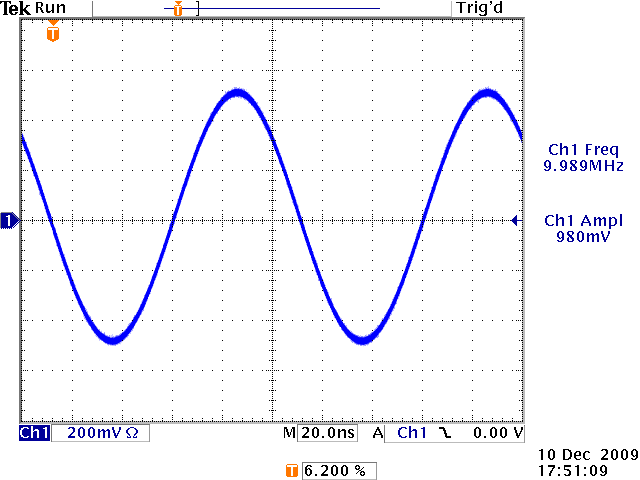
Aliasing means that frequency components loose their original positions on the sampled data and become ambiguous. This is possible if the analog signal contains frequency components above so called Nyquist limit, which is sampling frequency divided by two.
Sampling is not filtering, it is actually a spectrum folding process, where all the small signal spectrum of the ADC maps onto DC to fs/2. For example, frequencies between fs/2 to fs map to the same interval, but spectrally inverted. So fs/2+1 kHz maps to fs/2-1 kHz on the sampled data. Thus it is not longer possible to say what was the original frequency of the signal before sampling, if any higher than fs/2 frequency components were present at the ADC input.
There are some special cases where undersampling and aliasing is done deliberately. One case is if the signal to be sampled is bandwidth limited, and fits between 0 and fs/2, but has higher frequency to start with. In that case, it is acceptable to undersample, as the spectral folding process maps the signal anyway on the lowest band. But this is usually not the case with DSO's.
Here are some examples of the aliasing, the first one is a Tektronix TDS3034A, 300 MHz, 4-channel, 2.5 Gs/s DSO. I used a 10 MHz sine wave input. As you'll see, it does have alias problems.
First, a quick look at 20 ns/div horizontal setting:

Increase horizontal to 10µs/div:
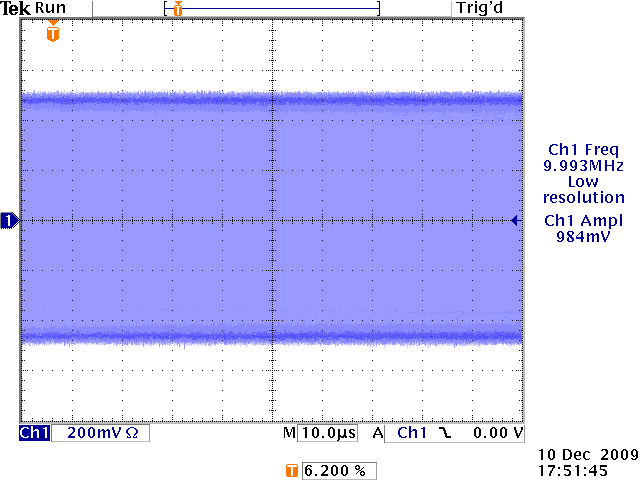
increase horizontal to 40µs/div:
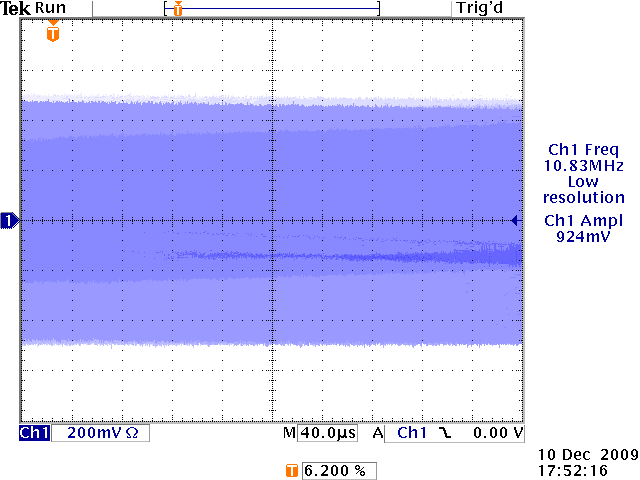
Now the "bar" starts to break up, let's bump the time/div to 4 ms/div:
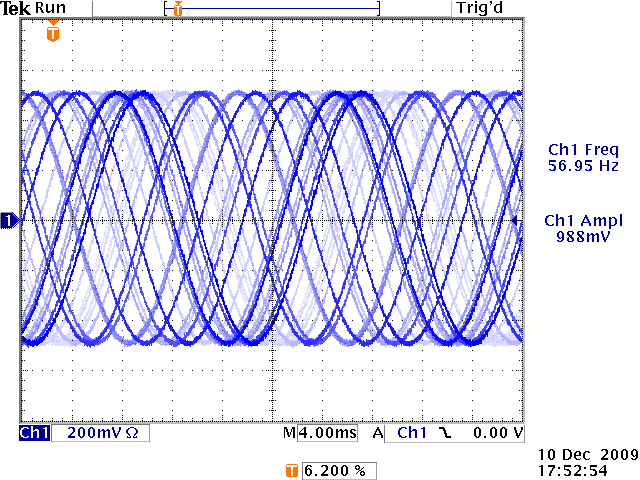
Wait a minute, measurement says now that our 10 MHz signal has turned into 57 Hz one! What if you wanted to measure some kind of an amplitude modulation from 10 MHz carrier? The amplitude and waveshape are quite correct. The only artifact seems to be that the scope seems not to trigger on the sinewave even if the settings are appropriate. Let's do a single sweep:
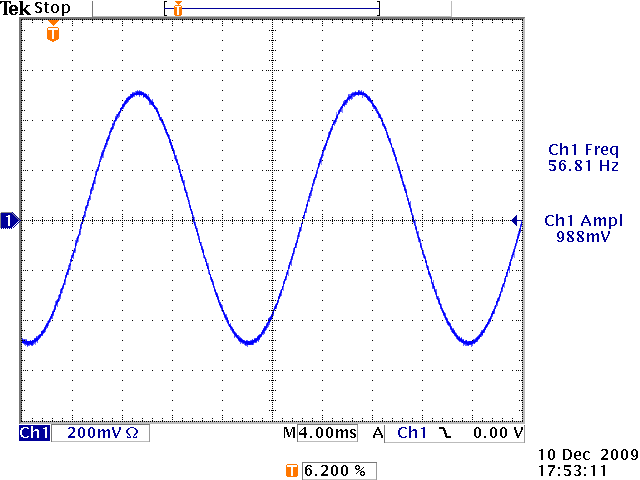
Perfectly nice "57 Hz" sine :)
Now, let's try more complex waveforms. First, a 10 MHz square wave @ 20ns/div, and then with 4 ms/div single sweep:
| Not aliased | Aliased |
|---|---|
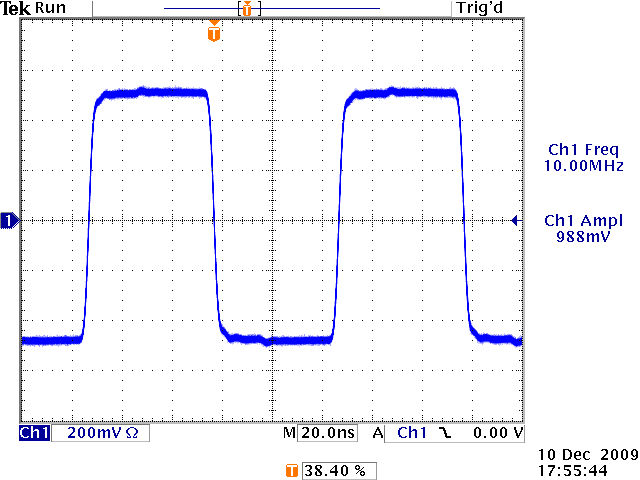
| 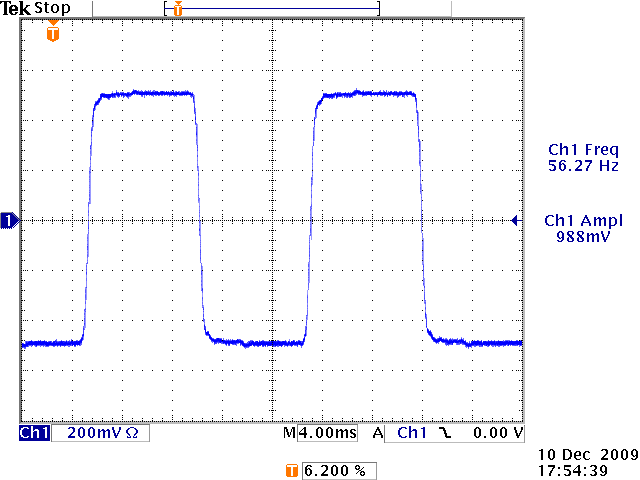
|
| Quite amazing undersampling from Tek, even the very small reflection bumps get nicely undersampled :P | |
And how about 1 MHz sinc-function, certainly that can't be undersampled? Think again.
| Not aliased | Aliased |
|---|---|
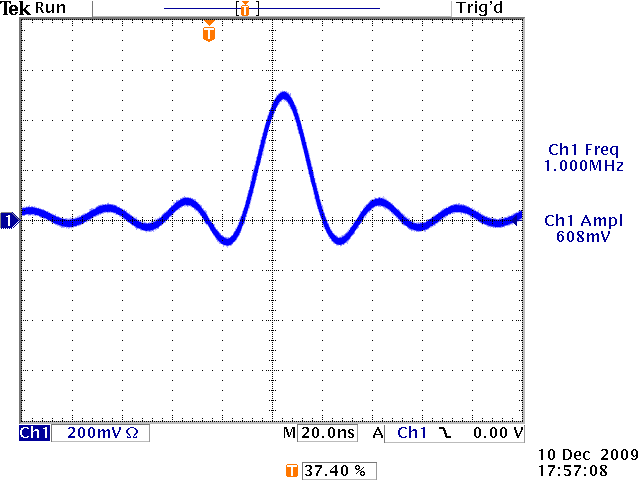
| 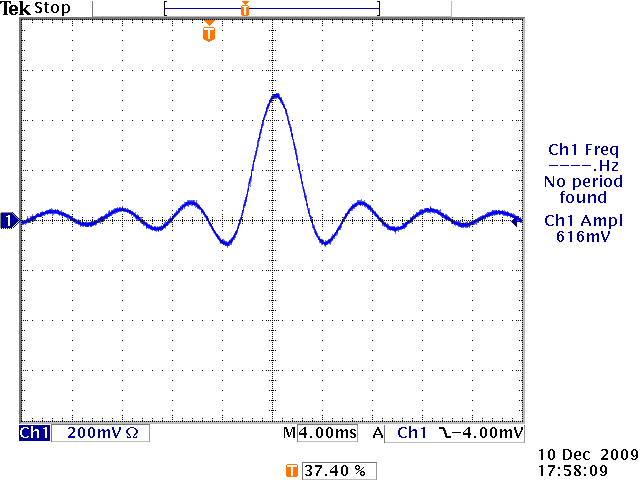
|
Me and my colleagues have been stumbled on the aliasing effect for several occasions, and it really sometimes takes a while to realize what is wrong.
Now some tests on my Agilent MSO6034A, 300 MHz, 4+16-channel, 2 GSa/s mixed- signal oscilloscope. I don't have a proper signal generator around, so I used an old color bar TV-generator tuned to VHF channel 12, which is about 230 MHz. Click on the pictures to get a larger one, I reduced the original XGA-sized images to fit more nicely here.
First, a sample of the RF-signal at 100 ms/div. Note the sample rate in bottom right, 4 MSa/s should result heavy aliasing, as the carrier is very much above Nyquist frequency.
The result is quite amazing. Not any sign of aliasing, very analog look, and using normal acquisition mode. What about when we zoom the acquisition:
One can actually find the 50 Hz frame synchronization regions from the zoom, not bad at all.. Let's look at the carrier so that we actually are measuring correct signal:
As expected, the carrier is around 230 MHz. Agilent seems to succeeded much better for alias suppression. I don't have pictures to show you, but the old 54645D HP seems also quite immune to the alias effect. So next time you get strange results from your DSO, try decreasing the time/div setting ;)
This page last updated on 2010-01-01
© Janne Ahonen 2010